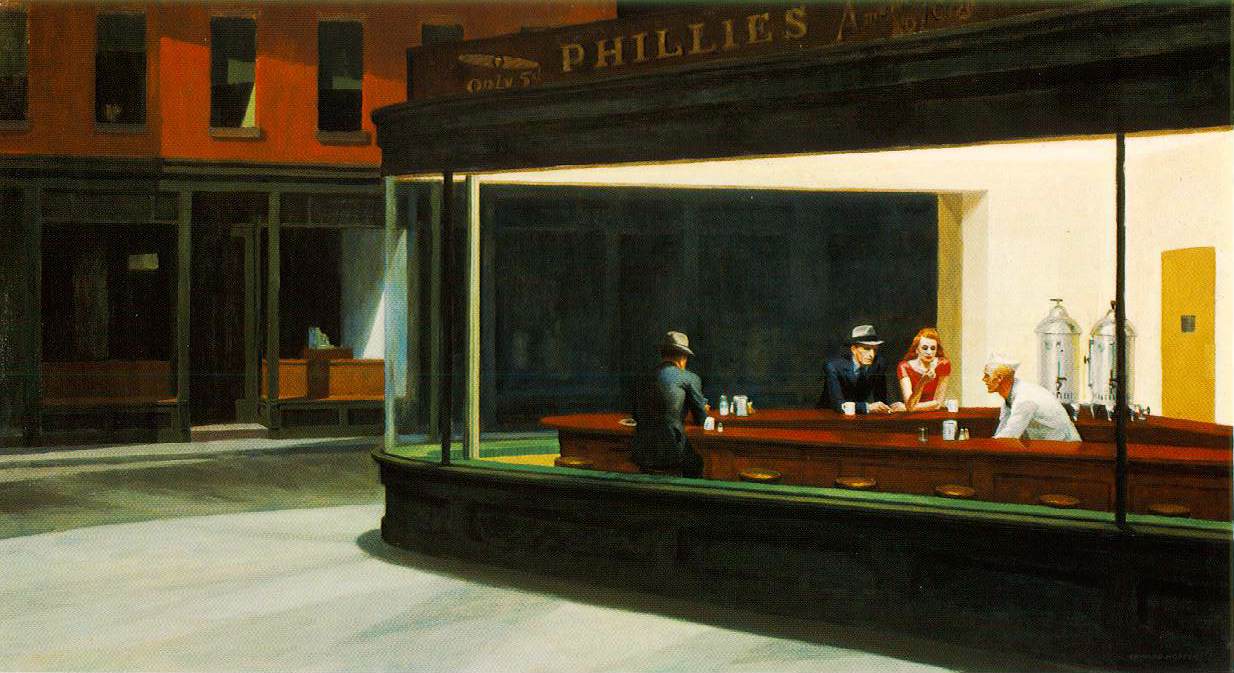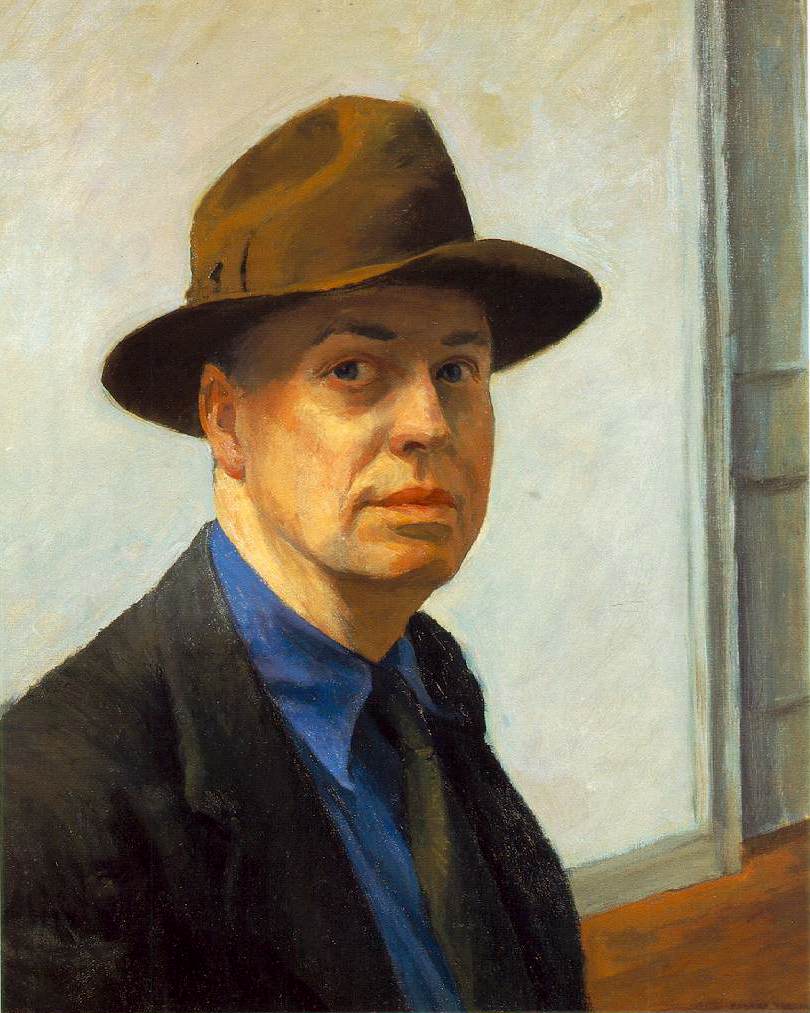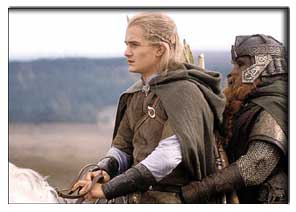Friday, September 30, 2005
Thought for the Day

Have a nice day!

Thursday, September 29, 2005
Indo-European Language
Wednesday, September 28, 2005
Louis Pasteur
French chemist who studied the effect of tartaric acid on polarized light. Under a microscope in 1848, he discovered that there were two types of tartrate crystals which were mirror images of each other. This contradicted Mitscherlich who had observed only a single type of crystal. It was later found that Pasteur had serendipitously prepared his crystals in a particular way which would produce large crystals of both isomers. He separated the two types by hand, and, using a Nicol prism, noticed that they rotated the plane of polarization in opposite directions. Pasteur is therefore the father of stereochemistry. In 1858, he showed that a plant mold only used one isomer of racemic acid, demonstrating that living tissues only organic compounds of right-handedness. Optical rotation was subsequently observed in solutions which contained no crystals. This result was explained by van't Hoff and Le Bel by asymmetry in the solute molecule themselves. Pasteur also investigated the reason that wine and beer could go sour. Under the microscope, he found two different shapes of yeast in the good and sour alcohol.
Pasteur showed the yeast to be an organism which, however, did not require oxygen for fermentation to occur. This showed Justus von Liebig who had maintained the fermentation was purely chemical, to have been mistaken. Pasteur demonstrated that mild heating applied after fermentation would kill the microorganisms and prevent souring. This gentle heating has come to be known as pasteurization. With a specially-constructed bent flask, Pasteur demonstrated conclusively that decay was produced by air-borne microorganisms. This refuted the doctrine of spontaneous generation. He also discovered the parasite responsible for killing silkworms, and saved the French silk industry by recommending that all infected worms and mulberries by destroyed.
Pasteur's work with silkworm parasites and air-borne germs led him to propose the germ theory of disease. He pressed doctors to disinfect their instruments by boiling and steaming. Pasteur found that septicemia was caused by an anaerobic bacterium. He urged surgeons to use clean instruments, wash their hands, and disinfect their gauze and bandages in "The Germ Theory and its Application to Medicine and Surgery," much as Lister was to do. He also confirmed Koch's discovery of the anthrax germ. Pasteur noticed that chickens were immune to anthrax, and postulated that it was because chickens have high body temperatures of 43-44° C. To test this hypothesis, he lowered the body temperature of a chicken to 37° C and found it to be susceptible to anthrax. Then, drawing from the work of Jenner, Pasteur heated anthrax germs and inoculated 25 sheep. When 50 sheep were then injected with anthrax, all 25 control sheep died while all inoculate sheep survived. Therefore, Pasteur demonstrated that the weakened anthrax lost its virulence but still could confer immunity. Pasteur termed this technique "vaccination," and applied it to chicken cholera and rabies.

Tuesday, September 27, 2005
Antoine-Laurent de Lavoisier: Father of Chemistry
Antoine-Laurent de Lavoisier (August 26, 1743 – May 8, 1794) was a French nobleman prominent in the histories of chemistry, finance, biology, and economics. He stated the first version of the Law of Conservation of Matter, recognized and named oxygen (1778), disproved the phlogiston theory, and helped to reform chemical nomenclature. Lavoisier is often referred to as the father of modern chemistry. He was also an investor and administrator of the Ferme Générale, a private tax collection company; chairman of the board of the Discount Bank (later the Banque de France); and a powerful member of a number of other aristocratic administrative councils. Due to his prominence in the pre-revolutionary government in France, he was beheaded at the height of the French Revolution.
Born to a wealthy family in Paris, Antoine Laurent Lavoisier inherited a large fortune when his mother died. He attended the College Mazarin from 1754 to 1761, studying chemistry, botany, astronomy, and mathematics. His first chemical publication appeared in 1764. In 1767 he worked on a geological survey of Alsace-Lorraine. He was elected a member of the French Academy of Sciences in 1768 for an essay on street lighting. In 1769 he worked on the first geological map of France. In 1771, he married 13-year-old Marie-Anne Pierette Paulze, who translated from English for him, illustrated his books, and assisted him in his research.
Beginning in 1775, he served in the Royal Gunpowder Administration, where his work led to improvements in the production of gunpowder and the use of agricultural chemistry by designing a new method for preparing saltpeter.
Some of Lavoisier's most important experiments examined the nature of combustion, or burning. Through these experiments, he demonstrated that burning is a process that involves the combination of a substance with oxygen. He also demonstrated the role of oxygen in metal rusting, as well as its role in animal and plant respiration: working with Pierre-Simon Laplace, Lavoisier conducted experiments that showed that respiration was essentially a slow combustion of organic material using inhaled oxygen. Lavoisier's explanation of combustion replaced the phlogiston theory, which postulates that materials release a substance called phlogiston when they burn.
He also discovered that the inflammable air of Henry Cavendish which he termed hydrogen (Greek for water-former), combined with oxygen to produce a dew, as Joseph Priestley had reported, which appeared to be water. Lavoisier's work was partly based on the work of Priestley (he corresponded with Priestley and fellow members of the Lunar Society). However, he tried to take credit for Priestley's discoveries. This tendency to use the results of others without acknowledgment, then draw conclusions is said to be characteristic of Lavoisier. In Sur la combustion en general (On Combustion in general), 1777 and Considérations Générales sur la Nature des Acides (General Consideration on the Nature of Acids), 1778), he demonstrated that the "air" responsible for combustion was also the source of acidity. In 1779, he named this part of the air oxygen (Greek for acid-former), and the other azote (Greek for no life). In Reflexions sur le Phlogistique, 1783, Lavoisier showed the phlogiston theory to be inconsistent.
Lavoisier's experiments were among the first truly quantitative chemical experiments ever performed; that is, he carefully weighed the reactants and products involved, a crucial step in the advancement of chemistry. He showed that, although matter changes its state in a chemical reaction, the quantity of matter is the same at the end as at the beginning of every chemical reaction. He burnt phosphorus and sulfur in air, and proved that the products weighed more than the original. Nevertheless, the weight gained was lost from the air. These experiments provided evidence for the law of the conservation of matter. Lavoisier also investigated the composition of water and air, which at the time were considered elements. He discovered the components of water were oxygen and hydrogen, and that air was a mixture of gases - primarily nitrogen and oxygen. With the French chemists Claude-Louis Berthollet, Antoine Fourcroy and Guyton de Morveau, Lavoisier devised a chemical nomenclature, or a system of names describing the structure of chemical compounds. He described it in Méthode de nomenclature chimique (Method of Chemical Nomenclature, 1787). Their system facilitated communication of discoveries between chemists of different backgrounds and is still largely in use today, including names such as sulfuric acid, sulfates, and sulfites.
His Traité Élémentaire de Chimie (Elementary Treatise of Chemistry, 1789, translated into English by Robert Kerr) is considered to be the first modern chemical textbook, and presented a unified view of new theories of chemistry, contained a clear statement of the Law of Conservation of Mass, and denied the existence of phlogiston. Also, Lavoisier clarified the concept of an element as a simple substance that could not be broken down by any known method of chemical analysis, and he devised a theory of the formation of chemical compounds from elements. In addition, it contained a list of elements, or substances that could not be broken down further, which included oxygen, nitrogen, hydrogen, phosphorus, mercury, zinc, and sulphur. It also forms the basis for the modern list of elements. His list, however, also included light and caloric, which he believed to be material substances. While many leading chemists of the time refused to believe Lavoisier's new revelations, the Elementary Treatise was written well enough to convince the younger generation.
Lavoisier's fundamental contributions to chemistry were a result of a conscious effort to fit all experiments into the framework of a single theory. He established the consistent use of chemical balance, used oxygen to overthrow the phlogiston theory, and developed a new system of chemical nomenclature which held that oxygen was an essential constituent of all acids (which later turned out to be erroneous). For the first time the modern notion of elements is laid out systematically; the three or four elements of classical chemistry gave way to the modern system, and Lavoisier worked out reactions in chemical equations that respect the conservation of mass (see, for example, the nitrogen cycle). His contributions are considered the most important in advancing the science of chemistry to the level of what had been achieved in physics and mathematics.
Of key significance in Lavoisier's life was his study of law. He received a law degree and was admitted to the bar, but never practiced as a lawyer. He did become interested in French politics, and as a result, he obtained a position as tax collector in the Ferme Générale, a tax farming company, at the age of 26, where he attempted to introduce reforms in the French monetary and taxation system. While in government work, he helped develop the metric system to secure uniformity of weights and measures throughout France.
As one of 28 French tax collectors and a powerful figure in the unpopular Ferme Générale, Lavoisier was branded a traitor during the Reign of Terror by revolutionists in 1794, and tried, convicted and guillotined all on one day in Paris, at the age of 51. Ironically, Lavoisier was one of the few liberals in his position. One of his actions that may have sealed his fate was a contretemps a few years earlier with the young Jean-Paul Marat, who subsequently became a leading revolutionary.
An appeal to spare his life was cut short by the judge: "The Republic has no need of geniuses [or, alternately, "scientists."]." His importance for science was expressed by the mathematician Joseph Louis Lagrange who lamented the beheading by saying: "It took them only an instant to cut off that head, but France may not produce another like it in a century."
One and a half years following his death, Lavoisier was exonerated by the French government. When his private belongings were delivered to his widow, a brief note was included reading "To the widow of Lavoisier, who was falsely convicted."
About a century after his death, a statue of Lavoisier was erected in Paris. It was later discovered that the sculptor had not actually copied Lavoisier's head for the statue, but used a spare head of the Marquis de Condorcet, the Secretary of the Academy of Sciences during Lavoisier's last years. Lack of money prevented alterations being made and, in any case, the French argued pragmatically that all men in wigs looked alike anyway. The statue was melted down during the Second World War and has never been replaced. Lavoisier's real memorial is chemistry itself.
A story relates how Lavoisier arranged a final experiment at his death intended to determine whether and for how long a severed head remains conscious after decapitation. Supposedly, Lavoisier decided to blink as many times as possible, and had an assistant count the blinks, which numbered between 15 and 20. The story may be apocryphal. Standard biographies have never mentioned the incident, and some biologists have expressed skepticism that it would be possible. Empirical evidence on this point varies in reliability and is difficult to evaluate.

Monday, September 26, 2005
Edward Hopper
Hopper, Edward (1882-1967). American painter, active mainly in New York.
He trained under Robert Henri, 1900-06, and between 1906 and 1910 made three trips to Europe, though these had little influence on his style. Hopper exhibited at the Armoury Show in 1913, but from then until 1923 he abandoned painting, earning his living by commercial illustration. Thereafter, however, he gained widespread recognition as a central exponent of American Scene painting, expressing the loneliness, vacuity, and stagnation of town life. Yet Hopper remained always an individualist: `I don't think I ever tried to paint the American scene; I'm trying to paint myself.'
Paintings such as Nighthawks (Art Institute of Chicago, 1942) convey a mood of loneliness and desolation by their emptiness or by the presence of anonymous, non-communicating figures. But of this picture Hopper said: `I didn't see it as particularly lonely... Unconsciously, probably, I was painting the loneliness of a large city.' Deliberately so or not, in his still, reserved, and blandly handled paintings Hopper often exerts a powerful psychological impact -- distantly akin to that made by the Metaphysical painter de Chirico; but while de Chirico's effect was obtained by making the unreal seem real, Hopper's was rooted in the presentation of the familiar and concrete.
American scene painting
Edward Hopper painted American landscapes and cityscapes with a disturbing truth, expressing the world around him as a chilling, alienating, and often vacuous place. Everybody in a Hopper picture appears terribly alone. Hopper soon gained a widespread reputation as the artist who gave visual form to the loneliness and boredom of life in the big city. This was something new in art, perhaps an expression of the sense of human hopelessness that characterized the Great Depression of the 1930s.
Edward Hopper has something of the lonely gravity peculiar to Thomas Eakins, a courageous fidelity to life as he feels it to be. He also shares Winslow Homer's power to recall the feel of things. For Hopper, this feel is insistently low-key and ruminative. He shows the modern world unflinchingly; even its gaieties are gently mournful, echoing the disillusionment that swept across the country after the start of the Great Depression in 1929. Cape Cod Evening (1939; 77 x 102 cm (30 1/4 x 40 in)) should be idyllic, and in a way it is. The couple enjoy the evening sunshine outside their home, yet they are a couple only technically and the enjoyment is wholly passive as both are isolated and introspective in their reveries. Their house is closed to intimacy, the door firmly shut and the windows covered. The dog is the only alert creature, but even it turns away from the house. The thick, sinister trees tap on the window panes, but there will be no answer.
Nighthawks
1942 (120 Kb); Oil on canvas, 30 x 60 in; The Art Institute of Chicago
Self-Portrait
1925-30 (110 Kb); Oil on canvas, 25 1/16 x 20 3/8 in; Whitney Museum of American Art, New York
Sunday, September 25, 2005
Henri Matisse
The art of our century has been dominated by two men: Henri Matisse and Pablo Picasso. They are artists of classical greatness, and their visionary forays into new art have changed our understanding of the world. Matisse was the elder of the two, but he was a slower and more methodical man by temperament and it was Picasso who initially made the greater splash. Matisse, like Raphael, was a born leader and taught and encouraged other painters, while Picasso, like Michelangelo, inhibited them with his power: he was a natural czar.
Matisse's artistic career was long and varied, covering many different styles of painting from Impressionism to near Abstraction. Early on in his career Matisse was viewed as a Fauvist, and his celebration of bright colors reached its peak in 1917 when he began to spend time on the French Riviera at Nice and Vence. Here he concentrated on reflecting the sensual color of his surroundings and completed some of his most exciting paintings. In 1941 Matisse was diagnosed as having duodenal cancer and was permanently confined to a wheelchair. It was in this condition that he completed the magnificent Chapel of the Rosary in Vence.
Matisse's art has an astonishing force and lives by innate right in a paradise world into which Matisse draws all his viewers. He gravitated to the beautiful and produced some of the most powerful beauty ever painted. He was a man of anxious temperament, just as Picasso, who saw him as his only rival, was a man of peasant fears, well concealed. Both artists, in their own fashion, dealt with these disturbances through the sublimation of painting: Picasso destroyed his fear of women in his art, while Matisse coaxed his nervous tension into serenity. He spoke of his art as being like "a good armchair"-- a ludicrously inept comparison for such a brilliant man-- but his art was a respite, a reprieve, a comfort to him.
Matisse initially became famous as the King of the Fauves, an inappropriate name for this gentlemanly intellectual: there was no wildness in him, though there was much passion. He is an awesomely controlled artist, and his spirit, his mind, always had the upper hand over the "beast" of Fauvism.
The experimental years
Matisse's Fauvist years were superseded by an experimental period, as he abandoned three-dimensional effects in favor of dramatically simplified areas of pure color, flat shape, and strong pattern. The intellectual splendor of this dazzlingly beautiful art appealed to the Russian mentality, and many great Matisses are now in Russia. One is The Conversation (1909; 177 x 217 cm (5 ft 9 3/4 in x 7 ft 1 1/2 in)) in which husband and wife converse. But the conversation is voiceless. They are implacably opposed: the man-- a self portrait-- is dominating and upright, while the woman leans back sulkily in her chair. She is imprisoned in it, shut in on all sides. The chair's arms hem her in, and yet the chair itself is almost indistinguishable from the background: she is stuck in the prison of her whole context. The open window offers escape; she is held back by an iron railing. He towers above, as dynamic as she is passive, every line of his striped pyjamas undeviatingly upright, a wholly directed man. His neck thickens to keep his outline straight and firm, an arrow of concentrated energy. The picture cannot contain him and his head continues beyond it and into the outside world. He is greater that it all, and the sole "word" of this inimical conversation is written in the scroll of the rail: Non. Does he say no to his intensity of life? They deny each other forever.
Supreme decoration
But denial is essentially antipathetic to Matisse. He was a great celebrator, and to many his most characteristic pictures are the wonderful odalisques he painted in Nice (he loved Nice for the sheer quality of its warm, southern light). Though such a theme was not appreciated at the time, it is impossible for us to look at Odalisque with Raised Arms (1923; 65 x 50 cm (25 1/2 x 19 3/4)) and feel that Matisse is exploiting her. The woman herself is unaware of him, lost in private reverie as she surrenders to the sunlight, and she, together with the splendid opulence of her chair, he diaphanous skirt, and the intricately decorated panels on either side, all unite in a majestic whole that celebrates the glory of creation. It is not her abstract beauty that attracts Matisse, but her concrete reality. He reveals a world of supreme decoration: for example, the small black patches of underarm hair on the odalisque are almost a witty inverted comma mark round the globes of her breasts and the rose pink center of each nipple.
Sculpting in paper
Picasso and Matisse were active to the end of their lives, but while Picasso was preoccupied with his ageing sexuality, Matisse moved into a period of selfless invention. In this last phase, too weak to stand at an easel, he created his papercuts, carving in colored paper, scissoring out shapes, and collaging them into sometimes vast pictures. These works, daringly brilliant, are the nearest he ever came to abstraction. Beasts of the Sea (1950; 295.5 x 154 cm (9 ft 8 in x 5 ft 1/2 in)) gives a wonderful underwater feeling of fish, sea cucumbers, sea horses, and water-weeds, the liquid liberty of the submarine world where most of us can never go. Its geometric rightness and chromatic radiance sum up the two great gifts of this artist and it is easy to see why he is the greatest colorist of the 20th century. He understood how elements worked together, how colors and shapes could come to life most startingly when set in context: everything of Matisse's works together superbly.
Notre-Dame, une fin d'après-midi (A Glimpse of Notre Dame in the Late Afternoon)
1902 (130 Kb); Oil on paper mounted on canvas, 72.5 x 54.5 cm (28 1/2 x 21 1/2 in); Albright-Knox Art Gallery, Buffalo, NY
Seated Figure, Tan Room
1918 (110 Kb); 16 x 13 in; Barnes Foundation
Photograph by Charalambos Amvrosiou
La Musique
1939 (180 Kb); Oil on canvas, 115.2 x 115.2 cm (45 3/8 x 45 3/8 in); Albright-Knox Art Gallery, Buffalo, NY
Saturday, September 24, 2005
My mom is there!
From CNN:
WASHINGTON (AP) -- Crowds opposed to the war in Iraq surged past the White House on Saturday, shouting "Peace now" in the largest anti-war protest in the nation's capital since the U.S. invasion.
The rally stretched through the day and into the night, a marathon of music, speechmaking and dissent on the National Mall.
Police Chief Charles H. Ramsey, noting that organizers had hoped to draw 100,000 people, said, "I think they probably hit that."
Speakers from the stage attacked President Bush's policies head on, but he was not at the White House to hear it. He spent the day in Colorado and Texas, monitoring hurricane recovery.
In the crowd: young activists, nuns whose anti-war activism dates to Vietnam, parents mourning their children in uniform lost in Iraq, and uncountable families motivated for the first time to protest.
Connie McCroskey, 58, came from Des Moines, Iowa, with two of her daughters, both in their 20s, for the family's first demonstration. McCroskey, whose father fought in World War II, said she never would have dared protest during the Vietnam War.
"Today, I had some courage," she said.
While united against the war, political beliefs varied. Paul Rutherford, 60, of Vandalia, Michigan, said he is a Republican who supported Bush in the last election and still does -- except for the war.
"President Bush needs to admit he made a mistake in the war and bring the troops home, and let's move on," Rutherford said.
His wife, Judy, 58, called the removal of Saddam Hussein "a noble mission" but said U.S. troops should have left when claims that Iraq possessed weapons of mass destruction proved unfounded.
"We found that there were none and yet we still stay there and innocent people are dying daily," she said.
"Bush Lied, Thousands Died," said one sign. "End the Occupation," said another. More than 1,900 members of the U.S. armed forces have died since the beginning of the war in March 2003.
A few hundred people in a counter demonstration in support of Bush's Iraq policy lined the protest route near the FBI building. The two groups shouted at each other, a police line keeping them apart. Organizers of a pro-military rally Sunday hoped for 10,000 people.
Ramsey said the day's protest unfolded peacefully under the heavy police presence. "They're vocal but not violent," he said.
Arthur Pollock, 47, of Cecil County, Maryland, said he was against the war from the beginning. He wants the soldiers out, but not all at once.
"They've got to leave slowly," said Pollock, attending his first protest. "It will be utter chaos in that country if we pull them out all at once."
Folk singer Joan Baez marched with the protesters and later serenaded them at a concert at the foot of the Washington Monument. An icon of the 1960s Vietnam War protests, she said Iraq is already a mess and the troops need to come home immediately. "There is chaos. There's bloodshed. There's carnage."
The protest in the capital showcased a series of demonstrations in foreign and other U.S. cities.
A crowd in London, estimated by police at 10,000, marched in support of withdrawing British troops from Iraq. Highlighting the need to get out, protesters said, were violent clashes between insurgents and British troops in the southern Iraq city of Basra.
In Rome, dozens of protesters held up banners and peace flags outside the U.S. Embassy and covered a sidewalk with messages and flowers in honor of those killed in Iraq.
Cindy Sheehan, the California mother who drew thousands of demonstrators to her 26-day vigil outside Bush's Texas ranch last month, won a roar of approval when she took the stage in Washington. Her 24-year-old son, Casey, was killed in Iraq last year.
"Shame on you," Sheehan admonished, directing that portion of her remarks to members of Congress who backed Bush on the war. "How many more of other people's children are you willing to sacrifice?
She led the crowd in chanting, "Not one more."
Separately, hundreds of opponents of the World Bank and International Monetary Fund danced to the beat of drums in the Dupont Circle part of the city before marching toward the White House to join the anti-war protesters.
Supporters of Bush's policy in Iraq assembled in smaller numbers to get their voice heard in the day's anti-war din. About 150 of them rallied at the U.S. Navy Memorial.
Gary Qualls, 48, of Temple, Texas, whose Marine reservist son, Louis, died last year in the insurgent stronghold of Fallujah, asked: "If you bring them home now, who's going to be responsible for all the atrocities that are fixing to happen over there? Cindy Sheehan?"
Friday, September 23, 2005
None Dare Call It Stolen
Posted on Wednesday, September 7, 2005. What actually happened in Ohio in 2004. An excerpt from this report appeared in August 2005. The complete text appears below. Originally from August 2005. By Mark Crispin Miller.
Whichever candidate you voted for (or think you voted for), or even if you did not vote (or could not vote), you must admit that last year’s presidential race was—if nothing else—pretty interesting. True, the press has dropped the subject, and the Democrats, with very few exceptions, have “moved on.” Yet this contest may have been the most unusual in U.S. history; it was certainly among those with the strangest outcomes. You may remember being surprised yourself. The infamously factious Democrats were fiercely unified—Ralph Nader garnered only about 0.38 percent of the national vote—while the Republicans were split, with a vocal anti-Bush front that included anti-Clinton warrior Bob Barr of Georgia; Ike’s son John Eisenhower; Ronald Reagan’s chairman of the Joint Chiefs of Staff, William J. Crowe Jr.; former Air Force Chief of Staff and onetime “Veteran for Bush” General Merrill “Tony” McPeak; founding neocon Francis Fukuyama; Doug Bandow of the Cato Institute, and various large alliances of military officers, diplomats, and business professors. The American Conservative, co-founded by Pat Buchanan, endorsed five candidates for president, including both Bush and Kerry, while the Financial Times and The Economist came out for Kerry alone. At least fifty-nine daily newspapers that backed Bush in the previous election endorsed Kerry (or no one) in this election. The national turnout in 2004 was the highest since 1968, when another unpopular war had swept the ruling party from the White House. Yet this ever-less-beloved president, this president who had united liberals and conservatives and nearly all the world against himself—this president somehow bested his opponent by 3,000,176 votes.
How did he do it? To that most important question the commentariat, briskly prompted by Republicans, supplied an answer. Americans of faith—a silent majority heretofore unmoved by any other politician—had poured forth by the millions to vote “Yes!” for Jesus’ buddy in the White House. Bush’s 51 percent, according to this thesis, were roused primarily by “family values.” Tony Perkins, president of the Family Research Council, called gay marriage “the hood ornament on the family values wagon that carried the president to a second term.” The pundits eagerly pronounced their amens—“Moral values,” Tucker Carlson said on CNN, “drove President Bush and other Republican candidates to victory this week”—although it is not clear why. The primary evidence of our Great Awakening was a post-election poll by the Pew Research Center in which 27 percent of the respondents, when asked which issue “mattered most” to them in the election, selected something called “moral values.” This slight plurality of impulse becomes still less impressive when we note that, as the pollsters went to great pains to make clear, “the relative importance of moral values depends greatly on how the question is framed.” In fact, when voters were asked to “name in their own words the most important factor in their vote,” only 14 percent managed to come up with “moral values.” Strangely, this detail went little mentioned in the post-electoral commentary.[1]
The press has had little to say about most of the strange details of the election—except, that is, to ridicule all efforts to discuss them. This animus appeared soon after November 2, in a spate of caustic articles dismissing any critical discussion of the outcome as crazed speculation: “Election paranoia surfaces: Conspiracy theorists call results rigged,” chuckled the Baltimore Sun on November 5. “Internet Buzz on Vote Fraud Is Dismissed,” proclaimed the Boston Globe on November 10. “Latest Conspiracy Theory—Kerry Won—Hits the Ether,” the Washington Post chortled on November 11. The New York Times weighed in with “Vote Fraud Theories, Spread by Blogs, Are Quickly Buried”—making mock not only of the “post-election theorizing” but of cyberspace itself, the fons et origo of all such loony tunes, according to the Times.
Such was the news that most Americans received. Although the tone was scientific, “realistic,” skeptical, and “middle-of-the-road,” the explanations offered by the press were weak and immaterial. It was as if they were reporting from inside a forest fire without acknowledging the fire, except to keep insisting that there was no fire.[2] Since Kerry has conceded, they argued, and since “no smoking gun” had come to light, there was no story to report. This is an oddly passive argument. Even so, the evidence that something went extremely wrong last fall is copious, and not hard to find. Much of it was noted at the time, albeit by local papers and haphazardly. Concerning the decisive contest in Ohio, the evidence is lucidly compiled in a single congressional report, which, for the last half-year, has been available to anyone inclined to read it. It is a veritable arsenal of “smoking guns”—and yet its findings may be less extraordinary than the fact that no one in this country seems to care about them.
On January 5, Representative John Conyers of Michigan, the ranking Democrat on the House Judiciary Committee, released Preserving Democracy: What Went Wrong in Ohio. The report was the result of a five-week investigation by the committee’s Democrats, who reviewed thousands of complaints of fraud, malfeasance, or incompetence surrounding the election in Ohio, and further thousands of complaints that poured in by phone and email as word of the inquiry spread. The congressional researchers were assisted by volunteers in Ohio who held public hearings in Columbus, Cleveland, Toledo, and Cincinnati, and questioned more than two hundred witnesses. (Although they were invited, Republicans chose not to join in the inquiry.) [3]
Preserving Democracy describes three phases of Republican chicanery: the run-up to the election, the election itself, and the post-election cover-up. The wrongs exposed are not mere dirty tricks (though Bush/Cheney also went in heavily for those) but specific violations of the U.S. and Ohio constitutions, the Voting Rights Act, the Civil Rights Act of 1968, the National Voter Registration Act, and the Help America Vote Act. Although Conyers trod carefully when the report came out, insisting that the crimes did not affect the outcome of the race (a point he had to make, he told me, “just to get a hearing”), his report does “raise grave doubts regarding whether it can be said that the Ohio electors selected on December 13, 2004, were chosen in a manner that conforms to Ohio law, let alone Federal requirements and constitutional standards.” The report cites “massive and unprecedented voter irregularities and anomalies” throughout the state—wrongs, moreover, that were hardly random accidents. “In many cases,” the report says, “these irregularities were caused by intentional misconduct and illegal behavior, much of it involving Secretary of State J. Kenneth Blackwell, the co-chair of the Bush-Cheney campaign in Ohio.”[4]
The first phase of malfeasance entailed, among many other actions, several months of bureaucratic hijinks aimed at disenfranchising Democrats, the most spectacular result of which was “a wide discrepancy between the availability of voting machines in more minority, Democratic and urban areas as compared to more Republican, suburban and exurban areas.” Such unequal placement had the predictable effect of slowing the voting process to a crawl at Democratic polls, while making matters quick and easy in Bush country: a clever way to cancel out the Democrats’ immense success at registering new voters in Ohio. (We cannot know the precise number of new voters registered in Ohio by either party because many states, including Ohio, do not register voters by party affiliation. The New York Times reported in September, however, that new registration rose 25 percent in Ohio’s predominantly Republican precincts and 250 percent in Ohio’s predominantly Democratic precincts.)
At Kenyon College in Gambier, for instance, there were only two machines for 1,300 would-be voters, even though “a surge of late registrations promised a record vote.” Gambier residents and Kenyon students had to stand in line for hours, in the rain and in “crowded, narrow hallways,” with some of them inevitably forced to call it quits. “In contrast, at nearby Mt. Vernon Nazarene University, which is considered more Republican leaning, there were ample waiting machines and no lines.” This was not a consequence of limited resources. In Franklin County alone, as voters stood for hours throughout Columbus and elsewhere, at least 125 machines collected dust in storage. The county’s election officials had “decided to make do with 2,866 machines, even though the analysis showed that the county needs 5,000 machines.”
It seemed at times that Ohio’s secretary of state was determined to try every stunt short of levying a poll tax to suppress new voter turnout. On September 7, based on an overzealous reading of an obscure state bylaw, he ordered county boards of elections to reject all Ohio voter-registration forms not “printed on white, uncoated paper of not less than 80 lb. text weight.” Under public pressure he reversed the order three weeks later, by which time unknown numbers of Ohioans had been disenfranchised. Blackwell also attempted to limit access to provisional ballots. The Help America Vote Act—passed in 2002 to address some of the problems of the 2000 election—prevents election officials from deciding at the polls who will be permitted to cast provisional ballots, as earlier Ohio law had permitted. On September 16, Blackwell issued a directive that somehow failed to note that change. A federal judge ordered him to revise the language, Blackwell resisted, and the court was forced to draft its own version of the directive, which it ordered Blackwell to accept, even as it noted Blackwell’s “vigorous, indeed, at times, obdurate opposition” to compliance with the law.
Under Blackwell the state Republican Party tried to disenfranchise still more Democratic voters through a technique known as “caging.” The party sent registered letters to new voters, “then sought to challenge 35,000 individuals who refused to sign for the letters,” including “voters who were homeless, serving abroad, or simply did not want to sign for something concerning the Republican Party.” It should be noted that marketers have long used zip codes to target, with remarkable precision, the ethnic makeup of specific neighborhoods, and also that, according to exit polls last year, 84 percent of those black citizens who voted in Ohio voted for Kerry.[5]
The second phase of lawlessness began the Monday before the election, when Blackwell issued two directives restricting media coverage of the election. First, reporters were to be barred from the polls, because their presence contravened Ohio’s law on “loitering” near voting places. Second, media representatives conducting exit polls were to remain 100 feet away from the polls. Blackwell’s reasoning here was that, with voter turnout estimated at 73 percent, and with many new voters so blissfully ignorant as to have “never looked at a voting machine before,” his duty was clear: the public was to be protected from the “interference or intimidation” caused by “intense media scrutiny.” Both cases were at once struck down in federal court on First Amendment grounds.
Blackwell did manage to ban reporters from a post-election ballot-counting site in Warren County because—election officials claimed—the FBI had warned of an impending terrorist attack there. The FBI said it issued no such warning, however, and the officials refused to name the agent who alerted them. Moreover, as the Cincinnati Enquirer later reported, email correspondence between election officials and the county’s building services director indicated that lockdown plans—“down to the wording of the signs that would be posted on the locked doors”—had been in the works for at least a week. Beyond suggesting that officials had something to hide, the ban was also, according to the report, a violation of Ohio law and the Fourteenth Amendment.
Contrary to a prior understanding, Blackwell also kept foreign monitors away from the Ohio polls. Having been formally invited by the State Department on June 9, observers from the Organization for Security and Cooperation in Europe, an international consortium based in Vienna, had come to witness and report on the election. The mission’s two-man teams had been approved to monitor the process in eleven states—but the observers in Ohio were prevented from watching the opening of the polling places, the counting of the ballots, and, in some cases, the election itself. “We thought we could be at the polling places before, during, and after” the voting, said S?S?gaard, a Danish member of the team. Denied admission to polls in Columbus, he and his partner went to Blackwell, who refused them letters of approval, again citing Ohio law banning “loitering” outside the polls. The two observers therefore had to “monitor” the voting at a distance of 100 feet from each polling place. Although not technically illegal, Blackwell’s refusal was improper and, of course, suspicious. (The Conyers report does not deal with this episode.)
To what end would election officials risk so malodorous an action? We can only guess, of course. We do know, however, that Ohio, like the nation, was the site of numerous statistical anomalies—so many that the number is itself statistically anomalous, since every single one of them took votes from Kerry. In Butler County the Democratic candidate for State Supreme Court took in 5,347 more votes than Kerry did. In Cuyahoga County ten Cleveland precincts “reported an incredibly high number of votes for third party candidates who have historically received only a handful of votes from these urban areas”—mystery votes that would mostly otherwise have gone to Kerry. In Franklin County, Bush received nearly 4,000 extra votes from one computer, and, in Miami County, just over 13,000 votes appeared in Bush’s column after all precincts had reported. In Perry County the number of Bush votes somehow exceeded the number of registered voters, leading to voter turnout rates as high as 124 percent. Youngstown, perhaps to make up the difference, reported negative 25 million votes.
In Cuyahoga County and in Franklin County—both Democratic strongholds—the arrows on the absentee ballots were not properly aligned with their respective punch holes, so that countless votes were miscast, as in West Palm Beach back in 2000. In Mercer County some 4,000 votes for president—representing nearly 7 percent of the electorate—mysteriously dropped out of the final count. The machines in heavily Democratic Lucas County kept going haywire, prompting the county’s election director to admit that prior tests of the machines had failed. One polling place in Lucas County never opened because all the machines were locked up somewhere and no one had the key. In Hamilton County many absentee voters could not cast a Democratic vote for president because county workers, in taking Ralph Nader’s name off many ballots, also happened to remove John Kerry’s name. The Washington Post reported that in Mahoning County “25 electronic machines transferred an unknown number of Kerry votes to the Bush column,” but it did not think to ask why.
Ohio Democrats also were heavily thwarted through dirty tricks recalling Richard Nixon’s reign and the systematic bullying of Dixie. There were “literally thousands upon thousands” of such incidents, the Conyers report notes, cataloguing only the grossest cases. Voters were told, falsely, that their polling place had changed; the news was conveyed by phone calls, “door-hangers,” and even party workers going door to door. There were phone calls and fake “voter bulletins” instructing Democrats that they were not to cast their votes until Wednesday, November 3, the day after Election Day. Unknown “volunteers” in Cleveland showed up at the homes of Democrats, kindly offering to “deliver” completed absentee ballots to the election office. And at several polling places, election personnel or hired goons bused in to do the job “challenged” voters—black voters in particular—to produce documents confirming their eligibility to vote. The report notes one especially striking incident:
In Franklin County, a worker at a Holiday Inn observed a team of 25 people who called themselves the “Texas Strike Force” using payphones to make intimidating calls to likely voters, targeting people recently in the prison system. The “Texas Strike Force” paid their way to Ohio, but their hotel accommodations were paid for by the Ohio Republican Party, whose headquarters is across the street. The hotel worker heard one caller threaten a likely voter with being reported to the FBI and returning to jail if he voted. Another hotel worker called the police, who came but did nothing.
The electoral fraud continued past Election Day, but by means far more complex and less apparent than the bullying that marked the day itself. Here the aim was to protect the spoils, which required the prevention of countywide hand recounts by any means necessary. The procedure for recounts is quite clear. In fact, it was created by Blackwell. A recount having been approved, each of the state’s eighty-eight counties must select a number of precincts randomly, so that the total of their ballots comes to 3 percent (at least) of the county’s total vote. Those ballots must then be simultaneously hand counted and machine counted. If the hand count and the new machine count match, the remaining 97 percent of the selected ballots may be counted by machine. If, however, the totals vary by as little as a single vote, all the other votes must be hand counted, and the results, once reconfirmed, must be accepted as the new official total.
The Ohio recount officially started on December 13—five days after Conyers’s hearings opened—and was scheduled to go on until December 28. Because the recount (such as it was) coincided with the inquiry, Conyers was able to discover, and reveal in his report, several instances of what seemed to be electoral fraud.
On December 13, for instance, Sherole Eaton, deputy director of elections for Hocking County, filed an affidavit stating that the computer that operates the tabulating machine had been “modified” by one Michael Barbian Jr., an employee of Triad GSI, the corporate manufacturer of the county’s voting machinery.
Ms. Eaton witnessed Mr. Barbian modify the Hocking County computer vote tabulator before the announcement of the Ohio recount. She further witnessed Barbian, upon the announcement that the Hocking County precinct was planned to be the subject of the initial Ohio test recount, make further alterations based on his knowledge of the situation. She also has firsthand knowledge that Barbian advised election officials how to manipulate voting machinery to ensure that [the] preliminary hand recount matched the machine count.[6]
The committee also learned that Triad similarly intervened in at least two other counties. In a filmed interview, Barbian said that he had examined machines not only in Hocking County but also in Lorain, Muskingum, Clark, Harrison, and Guernsey counties; his purpose was to provide the Board of Elections with as much information as possible—“The more information you give someone,” he said, “the better job they can do.” The report concludes that such information as Barbian and his colleagues could provide was helpful indeed:
Based on the above, including actual admissions and statements by Triad employees, it strongly appears that Triad and its employees engaged in a course of behavior to provide “cheat sheets” to those counting the ballots. The cheat sheets told them how many votes they should find for each candidate, and how many over and under votes they should calculate to match the machine count. In that way, they could avoid doing a full county-wide hand recount mandated by state law. If true, this would frustrate the entire purpose of the recount law—to randomly ascertain if the vote counting apparatus is operating fairly and effectively, and if not to conduct a full hand recount.
The report notes Triad’s role in several other cases. In Union County the hard drive on one tabulator was replaced after the election. (The old one had to be subpoenaed.) In Monroe County, after the 3 percent hand count had twice failed to match the machine count, a Triad employee brought in a new machine and took away the old one. (That machine’s count matched the hand count.) Such operations are especially worrying in light of the fact that Triad’s founder, Brett A. Rapp, “has been a consistent contributor to Republican causes.” (Neither Barbian nor Rapp would respond to Harper’s queries, and the operator at Triad refused even to provide the name of a press liaison.)
There were many cases of malfeasance, however, in which Triad played no role. Some 1,300 Libertarian and Green Party volunteers, led by Green Party recount manager Lynne Serpe, monitored the count throughout Ohio.[7] They reported that: In Allen, Clermont, Cuyahoga, Morrow, Hocking, Vinton, Summit, and Medina counties, the precincts for the 3 percent hand recount were preselected, not picked at random, as the law requires. In Fairfield County the 3 percent hand recount yielded a total that diverged from the machine count—but despite protests from observers, officials did not then perform a hand recount of all the ballots, as the law requires. In Washington and Lucas counties, ballots were marked or altered, apparently to ensure that the hand recount would equal the machine count. In Ashland, Portage, and Coshocton counties, ballots were improperly unsealed or stored. Belmont County “hired an independent programmer (‘at great expense’) to reprogram the counting machines so that they would only count votes for President during the recount.” Finally, Democratic and/or Green observers were denied access to absentee, and/or provisional ballots, or were not allowed to monitor the recount process, in Summit, Huron, Putnam, Allen, Holmes, Mahoning, Licking, Stark, Medina, Warren, and Morgan counties. In short, the Ohio vote was never properly recounted, as required by Ohio law.
That is what the Democratic staff of the House Judiciary Committee found, that is what they distributed to everyone in Congress, and that is what any member of the national press could have reported at any time in the last half year. Conyers may or may not have precisely captured every single dirty trick. The combined votes gained by the Republicans through such devices may or may not have decided the election. (Bush won Ohio by 118,601 votes.) Indeed, if you could somehow look into the heart of every eligible voter in the United States to know his or her truest wishes, you might discover that Bush/Cheney was indeed the people’s choice. But you have to admit—the report is pretty interesting.
In fact, its release was timed for maximum publicity. According to the United States Code (Title 3, Chapter 1, Section 15), the President of the Senate—i.e., the U.S. Vice President—must announce each state’s electoral results, then “call for objections.” Objections must be made in writing and “signed by at least one Senator and one Member of the House of Representatives.” A challenge having been submitted, the joint proceedings must then be suspended so that both houses can retire to their respective chambers to decide the question, after which they reconvene and either certify or reject the vote.
Thus was an unprecedented civic drama looming on the day that Conyers’s report appeared. First of all, electoral votes had been contested in the Congress only twice. In 1877 the electoral votes of several states were challenged, some by Democrats supporting Samuel Tilden, others by Republicans supporting Rutherford B. Hayes. In 1969, Republicans challenged the North Carolina vote when Lloyd W. Bailey, a “faithless elector” pledged to Richard Nixon for that state, voted for George Wallace.[8] And a new challenge would be more than just “historic.” Because of what had happened—or not happened—four years earlier, it would also be extraordinarily suspenseful. On January 6, 2001, House Democrats, galvanized by the electoral larceny in Florida, tried and failed to challenge the results. Their effort was aborted by the failure of a single Democratic senator to join them, as the law requires. Al Gore—still vice president, and therefore still the Senate’s president—had urged Democrats to make no such unseemly waves but to respect Bush’s installation for the sake of national unity. Now, it seemed, that partisan disgrace would be redressed, at least symbolically; for a new challenge from the House, by Representative Stephanie Tubbs-Jones of Ohio, would be co-signed by Barbara Boxer, Democratic senator from California, who, at a noon press conference on January 6, heightened the suspense by tearfully acknowledging her prior wrong: “Four years ago I didn’t intervene. I was asked by Al Gore not to do so and I didn’t do so. Frankly, looking back on it, I wish I had.”
It was a story perfect for TV—a rare event, like the return of Halley’s comet; a scene of high contention in the nation’s capital; a heroine resolved to make things right, both for the public and herself. Such big news would highlight Conyers’s report, whose findings, having spurred the challenge in the first place, would now inform the great congressional debate on the election in Ohio.
As you may recall, this didn’t happen—the challenge was rejected by a vote of 267:31 in the House and 74:1 in the Senate. The Boston Globe gave the report 118 words (page 3); the Los Angeles Times, 60 words (page 18). It made no news in the Wall Street Journal, USA Today, Newsweek, Time, or U.S. News & World Report. It made no news on CBS, NBC, ABC, or PBS. Nor did NPR report it (though Talk of the Nation dealt with it on January 6). CNN did not report it, though Donna Brazile pointedly affirmed its copious “evidence” on Inside Politics on January 6. (Judy Woodruff failed to pause for an elaboration.) Also on that date, the Fox News Channel briefly showed Conyers himself discussing “irregularities” in Franklin County, though it did not mention the report. He was followed by Tom DeLay, who assailed the Democrats for their “assault against the institutions of our representative democracy.” The New York Times negated both the challenge and the document in a brief item headlined “Election Results to Be Certified, with Little Fuss from Kerry,” which ran on page 16 and ended with this quote from Dennis Hastert’s office, vis-a-vis the Democrats: “They are really just trying to stir up their loony left.”
Indeed, according to the House Republicans, it was the Democrats who were the troublemakers and cynical manipulators—spinning “fantasies” and “conspiracy theories” to “distract” the people, “poison the atmosphere of the House of Representatives” (Dave Hobson, R., Ohio), and “undermine the prospect of democracy” (David Dreier, R., Calif.); mounting “a direct attack to undermine our democracy” (Tom DeLay, R., Tex.), “an assault against the institutions of our representative democracy” (DeLay); trying “to plant the insidious seeds of doubt in the electoral process” (J. D. Hayworth, R., Ariz.); and in so doing following “their party’s primary strategy: to obstruct, to divide and to destroy” (Deborah D. Pryce, R., Ohio).
Furthermore, the argument went, there was no evidence of electoral fraud. The Democrats were using “baseless and meritless tactics” (Pryce) to present their “so-called evidence” (Bob Ney, R., Ohio), “making allegations that have no basis of fact” (Candice Miller, R., Mich.), making claims for which “there is no evidence whatsoever, no evidence whatsoever” (Dreier). “There is absolutely no credible basis to question the outcome of the election” (Rob Portman, R., Ohio). “No proven allegations of fraud. No reports of widespread wrongdoing. It was, at the end of the day, an honest election” (Bill Shuster, R., Pa.). And so on. Bush won Ohio by “an overwhelming and comfortable margin,” Rep. Pryce insisted, while Ric Keller (R., Fla.) said that Bush won by “an overwhelmingly comfortable margin.” (“The president’s margin is significant,” observed Roy Blunt, R., Mo.) In short, as Tom DeLay put it, “no such voter disenfranchisement occurred in this election of 2004—and, for that matter, the election of 2000. Everybody knows it. The voters know it, the candidates know it, the courts know it, and the evidence proves it.”
That all this commentary was simply wrong went unnoticed and/or unreported. Once Bush was re-inaugurated, all inquiries were apparently concluded, and the story was officially kaput. By March talk of fraud was calling forth the same reflexive ridicule that had prevailed back in November—but only now and then, on those rare moments when somebody dared bring it up: “Also tonight,” CNN’s Lou Dobbs deadpanned ironically on March 8, “Teresa Heinz Kerry still can’t accept certain reality. She suggests the presidential election may have been rigged!” And when, on March 31, the National Election Data Archive Project released its study demonstrating that the exit polls had probably been right, it made news only in the Akron Beacon-Journal.[9] The article included this response from Carlo LoParo, Kenneth Blackwell’s spokesman: “What are you going to do except laugh at it?”
In the summer of 2003, Representative Peter King (R., N.Y.) was interviewed by Alexandra Pelosi at a barbecue on the White House lawn for her HBO documentary Diary of a Political Tourist. “It’s already over. The election’s over. We won,” King exulted more than a year before the election. When asked by Pelosi—the daughter of House Minority Leader Nancy Pelosi—how he knew that Bush would win, he answered, “It’s all over but the counting. And we’ll take care of the counting.”
King, who is well known in Washington for his eccentric utterances, says he was kidding, that he has known Pelosi for years, that she is “a clown,” and that her project was a “spoof.” Still, he said it. And laughter, despite the counsel of Kenneth Blackwell’s press flack, seems an inappropriate response to the prospect of a stolen election—as does the advice that we “get over it.” The point of the Conyers report, and of this report as well, is not to send Bush packing and put Kerry in his place. The Framers could no more conceive of electoral fraud on such a scale than they could picture Fox News Channel or the Pentagon; and so we have no constitutional recourse, should it be proven, finally, that the wrong guy “won.” The point of our revisiting the last election, rather, is to see exactly what the damage was so that the people can demand appropriate reforms. Those who say we should “move on” from that suspicious race and work instead on “bigger issues”—like electoral reform—are urging the impossible; for there has never been a great reform that was not driven by some major scandal.
“If a nation expects to be ignorant and free, in a state of civilization,” Thomas Jefferson said, “it expects what never was and never will be.” That much-quoted line foretells precisely what has happened to us since “the news” has turned into a daily paraphrase of Karl Rove’s fevered dreams. Just as 2+2=5 in Orwell’s Oceania, so here today the United States just won two brilliant military victories, 9/11 could not have been prevented, we live in a democracy (like the Iraqis), and last year’s presidential race “was, at the end of the day, an honest election.” Such claims, presented as the truth, are nothing but faith-based reiteration, as valid as the notions that one chooses to be homosexual, that condoms don’t prevent the spread of HIV, and that the universe was made 6,000 years ago.
In this nation’s epic struggle on behalf of freedom, reason, and democracy, the press has unilaterally disarmed—and therefore many good Americans, both liberal and conservative, have lost faith in the promise of self-government. That vast surrender is demoralizing, certainly, but if we face it, and endeavor to reverse it, it will not prove fatal. This democracy can survive a plot to hijack an election. What it cannot survive is our indifference to, or unawareness of, the evidence that such a plot has succeeded.
Notes
1. Another poll, by Zogby International, showed that 33 percent of voters deemed “greed and materialism” the most pressing moral problems in America. Only 12 percent of those polled cited gay marriage.
2. Keith Olbermann, on MSNBC, stood out as an heroic exception, devoting many segments of his nightly program Countdown to the myriad signs of electoral mischief, particularly in Ohio.
3. The full report can be downloaded from the Judiciary Committee’s website at www.house.gov/judiciary_ democrats/ohiostatusrept1505.pdf and is also, as of May, available as a trade paperback, entitled What Went Wrong in Ohio. I should note here that, in a victory for family values, the publishers of that paperback are my parents, Jordan and Anita Miller.
4. When contacted by Harper’s Magazine, Blackwell spokesman Carlo LoParo dismissed Conyers’s report as a partisan attack. “Why wasn’t it more than an hour’s story?” he asked, referring to the lack of media interest in the report. “Everybody can’t be wrong, can they?”
5. Let it not be said that the Democrats rose wholly above the electoral fray: in Defiance County, Ohio, one Chad Staton was arrested on 130 counts of vote fraud when he submitted voter-registration forms purportedly signed by, among others, Dick Tracy, Jeffrey Dahmer, Michael Jackson, and Mary Poppins. Of course, depending on party affiliation, the consequence of election misdeeds varies. Staton, who told police he was paid in crack for each registration, received fifty-four months in jail for his fifth-degree felonies; Blackwell, for his part, is now the G.O.P. front-runner for governor of Ohio.
6. In May 2005, Eaton was ordered by the Hocking County Board of Elections to resign from her position.
7. The recount itself was the result of a joint application from the Green and Libertarian parties.
8. Offended by the president-elect’s first cabinet appointments (Henry Kissinger, Daniel Patrick Moynihan, et al.), Bailey was protesting Nixon’s liberalism.
9. On the other hand, the thesis that the exit polls were flawed had been reported by the Associated Press, the Washington Post, the Chicago Tribune, USA Today, the San Francisco Chronicle, the Columbus Dispatch, CNN.com, MSNBC, and ABC (which devoted a Nightline segment to the “conspiracy theory” that the exit polls had been correct).
Thursday, September 22, 2005
Harper's Index: August 2005
Posted on Wednesday, September 14, 2005
Number of new U.S. soldiers the Army would need in 2006 to replenish ranks abroad : 80,000 [U.S. Army Recruiting Command (Fort Knox, Ky.)]
Percentage of this goal it expects to meet : 9.9 [U.S. Army Recruiting Command (Fort Knox, Ky.)]
Percentage change since 1996 in the average recruitment cost per new U.S. soldier : +84 [U.S. Army Recruiting Command (Fort Knox, Ky.)]
Number of killed or captured suspects reported so far by U.S. media to be Al Qaeda’s “number 3” man : 4 [Harper's research]
Minimum number of people convicted on “terrorism-related charges” since 2001, according to Alberto Gonzales in April : 200 [U.S. Department of Justice]
Actual number convicted on charges related to terrorism or national security : 39 (see page 48) [Dan Eggen, Washington Post]
Number of Iraqi troops that have been “trained and equipped,” according to President Bush in April : 150,000 [White House (Washington)]
Number that the U.S. military considers ready to deploy independently : 1,500 [U.S. Military Combined Press Information Center (Baghdad)]
Number of members of the Iraqi parliament who worship not only Muhammad but a fallen angel named Lucifer : 3 [Verlag Denge Ezidiyan (Oldenburg, Germany)]
Acres in Israel to which a born-again Christian from Texas bought oil-exploration rights in 2000 : 96,000 [Zion Oil & Gas, Inc. (Dallas)]
Chapter and verse of Deuteronomy that he says predicts his success, because of the phrase, “let him dip his foot in oil” : 33:24 [Zion Oil & Gas, Inc. (Dallas)]
Number of Palestinian communities that will be surrounded by the new Israel security fence on at least three sides : 53 [B'Tselem (Jerusalem)]
Chance that a German says Israel’s treatment of Palestinians is the same “in principle” as how Nazis treated Jews : 1 in 2 [Wilhelm Heitmeyer, Institut ferdisziplin Konflikt und Gewaltforschung (Bielefeld, Germany)]
Factor by which the unemployment rate among Jewish immigrants to Germany exceeds the national average : 3.5 [Moses Mendelssohn Zentrum (Potsdam, Germany)]
Percentage of Germans who say, about the Nazi era, that “one should not always poke around in old wounds” : 60 [TNS Emnid (Bielefeld, Germany)]
Selling price in June for a bar of soap allegedly made from the liposuctioned fat of Silvio Berlusconi : $18,000 [Galerie Nicola von Senger (Zurich)]
Number of Pepsi products plainly visible in a May TV ad for Arnold Schwarzenegger : 5 [Harper's research]
Ratio of the projected U.S. ad revenue of Google and Yahoo! this year to that of NBC, CBS, and ABC in primetime : 1:1 [eMarketer (N.Y.C.)/"Jack Myers Report"(N.Y.C.)]
Amount that the Catholic Church spent in Britain this summer advertising for new priests on bar coasters : $1,100 [National Office for Vocation (London)]
Number of New Orleans bars visited this spring by an undercover team investigating racial discrimination : 40 [Greater New Orleans Fair Housing Action Center (New Orleans)]
Percentage of the bars that charged black customers more than white customers : 40 [Greater New Orleans Fair Housing Action Center (New Orleans)]
Amount recouped by the U.S. government in institutional fraud cases since 1986 : $8,000,000,000[U.S. Department of Justice]
Amount that whistleblowers received as a cut of this : $1,300,000,000 [U.S. Department of Justice]
Chance that a U.S. company monitors the emails of at least some employees : 1 in 3 [Proofpoint, Inc. (Cupertino, Calif.)]
Chance that it has fired an employee for violation of email policies : 1 in 4 [Proofpoint, Inc. (Cupertino, Calif.)]
Factor by which the expulsion rate in U.S. preschools last year exceeded the rate in grades K-12 : 3 [Walter Gilliam, Yale Child Study Center (New Haven, Conn.)]
Average amount of sugar consumed each year by a U.S. preschooler, expressed as a percentage of body weight : 149 [Centers for Disease Control and Prevention (Atlanta)/U.S. Department of Agriculture]
Estimated total number of tons by which American adults are overweight : 1,180,000 [Harper's research]
Total weight, in tons, of the population of the Los Angeles metropolitan area : 883,000 [Harper's research]
Number of U.S. cities that have agreed to meet the Kyoto Protocols on global warming : 166 [Office of the Mayor (Seattle)]
Average number of times each day that aircrafts intrude into D.C.-area restricted flight zones : 2 [Federal Aviation Administration (Washington)]
Days it took a Nepali Sherpa in May to crawl the length of Manhattan : 6 [L. G. Khambache Sherpa (Brooklyn)]
Fine levied last year on a restaurant in southwest China for serving sushi atop naked women : $242 [Kunming Xishan District Bureau of Health]
Percentage of the world’s cell phone users who say they have interrupted sex to answer a call : 14 [BBDO Worldwide (N.Y.C.)]
Percentage of newlywed couples who report having had a physically violent fight in the year before marriage : 37 [Kenneth Leonard and Julie Schumacher, Research Institute on Addictions (Buffalo)]
Number of Viagra users who have reported becoming blind from the drug : 38 [U.S. Food and Drug Administration (Rockville, Md.)]
Number of corpses shipped on Delta Air Lines last year : 42,175 [Delta Air Lines (Atlanta)]
Amount that Northwest Airlines expects to save each year by eliminating free magazines on flights : $565,000 [Northwest Airlines (Minneapolis)]
Amount by eliminating free pretzels : $2,000,000 [Northwest Airlines (Minneapolis)]
Wednesday, September 21, 2005
What pagan god or goddess are you?

Freya | 80% | ||
Freyr | 70% | ||
Bragi | 70% | ||
Balder | 70% | ||
Odin | 60% | ||
Sif | 60% | ||
Loki | 50% | ||
Thor | 50% | ||
Njord | 40% | ||
Hel | 40% | ||
Frigg | 40% | ||
Skadi | 40% | ||
Tyr | 30% | ||
Heimdall | 30% |
Which Pagan God or Goddess are you most like?
created with QuizFarm.com
Tuesday, September 20, 2005
Nutty Ryan Adams
Shifty Taft
Reality Check
Renee Zellweger seeks comfort from ex
Saturday, September 17 2005, 14:40 BST -- by Daniel Kilkelly
Renee Zellweger has been seeking comfort from ex-boyfriend Jack White following the breakdown of her marriage to Kenny Chesney.
The Bridget Jones actress phoned White following her decision to seek an annulment. Jack has now flown to Renee's home in Hamptons to comfort her, angering his model wife Karen Elson.
"Jack and Renee have always been soulmates, even after they separated," a source told the Daily Star. "He was devastated when she married Kenny four months after they separated, without telling him about it. He told her it was a mistake to get hitched so quickly.
"Weeks later, he married Karen in an equally-secret wedding after a whirlwind four-month romance. But although Jack's relieved Renee's marriage has ended, he hated to hear how upset she sounded on the phone. So he dropped everything to be by her side. Karen only found out after he'd left. And she was absolutely horrified.
"She knows that although Jack is very fond of her, she will never measure up to Renee. And she's terrified he will rekindle his romance with her. But he assured her the last thing Renee wants right now is another relationship."
Karen Elson:



Renee Zellweger:



Then again, Jack White:



Monday, September 19, 2005
Orlando Bloom in Lord of the Rings
Tour of Ireland
Daily Eye Candy: The Strokes
Sunday, September 18, 2005
More Ohio Political Drama
Apparently Kenny Chesney Realized Zellweger Would Have Given Him Homely Children
Actress RENEE ZELLWEGER and husband KENNY CHESNEY reportedly split because the singer refused start a family.
The 36-year-old BRIDGET JONES actress married Chesney four months ago (MAY05) and allegedly longed to have babies galore with the country and western singer, but he flatly refused.
A source told British newspaper The Mail on Sunday, "Her biological clock is ticking, she is desperate to have children. Renee's understanding was that Kenny wanted a family too. It was Kenny who got cold feet."
I Hate Sienna Miller Again
Cokehead Kate Moss
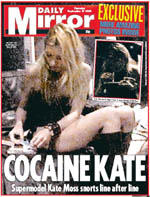
Saturday, September 17, 2005
Bush's Note
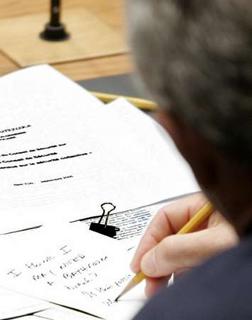
Friday, September 16, 2005
Greetings from Southern Louisiana
Dear America,
I suppose we should introduce ourselves: We're South Louisiana. We have arrived on your doorstep on short
notice and we apologize for that, but we never were much for waiting around for invitations. We're not much on formalities like that.
And we might be staying around your town for a while, enrolling in your schools and looking for jobs, so we wanted to tell you a few things about us. We know you didn't ask for this and neither did we, so we're just going to have to make the best of it.
First of all, we thank you. For your money, your water, your food, your prayers, your boats and buses and the men and women of your National Guards, fire departments, hospitals
and everyone else who has come to our rescue.
We're a fiercely proud and independent people, and we don't cotton much to outside interference, but we're not ashamed to accept help when we need it. And right now, we need it.
Just don't get carried away. For instance, once we get around to fishing again, don't try to tell us what kind of lures work best in your waters. We're not going to listen. We're stubborn that way.
You probably already know that we talk funny and listen to strange music and eat things you'd probably hire an exterminator to get out of your yard.
We dance even if there's no radio. We drink at funerals. We talk too much and laugh too loud and live too large and, frankly, we're suspicious of those who don't.
We put Tabasco on stuff without tasting it first.
But we'll try not to judge you while we're in your town.
Everybody loves their home, we know that. But we love South Louisiana with a ferocity that borders on the pathological. Sometimes we bury our dead in LSU sweatshirts.
Often we don't make sense. You may wonder why, for instance - if we could only carry one small bag of belongings with us on our journey to your state - why in God's name did we bring a pair of shrimp boots?
We can't really explain that. It is what it is.
You've probably heard that many of us stayed behind. As bad as it is, many of us cannot fathom a life outside of our border, out in that place we call Elsewhere.
The only way you could understand that is if you have been there, and so many of you have. So you realize that when you strip away all the craziness and bars and parades and music and architecture and all that hooey, really, the best thing about where we come from is us.
We are what made this place a national treasure. We're good people. And don't be afraid to ask us how to pronounce our names. It happens all the time.
When you meet us now and you look into our eyes, you will see the saddest story ever told. Our hearts are broken into a thousand pieces. But don't pity us. We're gonna make it. We're resilient. After all, we've been rooting for the Saints for 35 years. That's gotta count for something.
OK, maybe something else you should know is that we make jokes at inappropriate times.
But what the heck.
And one more thing: In our part of the country, we're used to having visitors. It's our way of life. So when all this is over and we move back home, we will repay to you the hospitality and
generosity of spirit you offer to us in this season of our despair.
That is our promise. That is our faith.
Sincerely,
South Louisiana Storm Victims
Thursday, September 15, 2005
The Pledge of Allegiance Is Unconstitutional
A federal judge declared Wednesday that the reciting of the Pledge of Allegiance in public schools is unconstitutional, a decision that could potentially put the divisive issue back before the U.S. Supreme Court.
Incredibly Important News
Links
- American Archaeology Conservancy
- American Cultural Resources Association
- American Friends Service Committee
- American Journal of Archaeology
- American Legacy Magazine
- American Museums
- American Red Cross
- Archaeo-Volunteers
- Archaeology Magazine
- Ask Jeeves
- Babel Fish Translation
- Ben Witherington's Blog
- Biblical Archaeology Society
- Black Facts Online
- Black Swamp Conservancy
- Black Voices
- Book Crossing
- British Museum
- Catholic Diocese of Toledo
- Center for American Archeology
- City of Maumee
- City of Northwood
- City of Oregon
- City of Perrysburg
- City of Rossford
- City of Sylvania
- City of Toledo
- City Paper
- CNN
- Codependent Collegian
- Congress of Racial Equality
- Congresswoman Marcy Kaptur
- Cricket Text Messaging
- Dave's ESL Cafe
- Defamer
- Discovery Channel
- eBay
- Economist
- Egyptian Museum
- Elastic Creative
- Fark
- Fort Meigs State Memorial
- Fotolibra
- Friendster
- Gawker Stalker
- Genographic Project
- Geocaching
- Getty Images
- Glass City Records
- Great Lakes Historical Society
- Greek Museums
- Hangman
- Harper's Magazine
- Hicksville Historical Society
- Historic Perrysburg
- History Channel
- HTML Tags
- Insult Monger
- Islamic Center of Greater Toledo
- Italian Museums
- Journal of American Archaeology
- Lots of Cities
- Lucas County Auditor
- Magic Stick and Majestic Theater
- Mickey Finn's Pub
- Minority Business Network
- MUEN
- My MySpace Profile
- NAACP
- Nation of Islam
- National Archives
- National Black Student Union
- National Congress of Black Women
- National Geographic
- National Organization of Blacks in Government
- New Orleans Saints
- Official Kwanzaa Web Site
- Ohio Department of Education
- Ohio Department of Job and Family Services
- Ohio Department of Rehabilitation and Correction - Offender Search
- Ohio Government
- Ohio Historical Society
- Ohio History Central
- Ohio Lottery
- Ohio News Network
- Ohio Unemployment Benefits
- Ohio's Historic Canals
- Onion
- Out in Toledo
- PayPal
- Photo Tag
- Pravda in English
- Rainbow Text Generator
- Salvation Army
- Smoking Gun
- Socialist Party USA
- Society for American Archaeology
- Something Awful
- Spell Check
- TARTA
- Ticketmaster
- TicketWeb
- Timeless Myths
- Toledo Area Chamber of Commerce
- Toledo Blade
- Toledo Bloggers
- Toledo Express Airport
- Toledo Firefighters Museum
- Toledo Guide
- Toledo Museum of Art
- Toledo Police Department
- Toledo Public Schools
- Toledo Sports Arena
- Toledo Tales
- Toledo Zoo
- Toledo's Attic
- Toledotastic
- T-Town Music
- TV Guide
- Underground and Club Bijou
- United Negro College Fund
- United States District Court Northern District of Ohio
- United States Government
- United States Postal Service
- Untold Black History
- USGenWeb Project
- Velvet Rope
- Village of Walbridge
- WGTE Public Broadcasting
- WGTE TV 30 Program Schedule
- Where's George?
- White House
- Whitehouse Historical Society
- Wire Image
- World Atlas
- World Factbook
- World History Chronology
- WTOL Channel 11
- Yahoo
- Zaba Search
